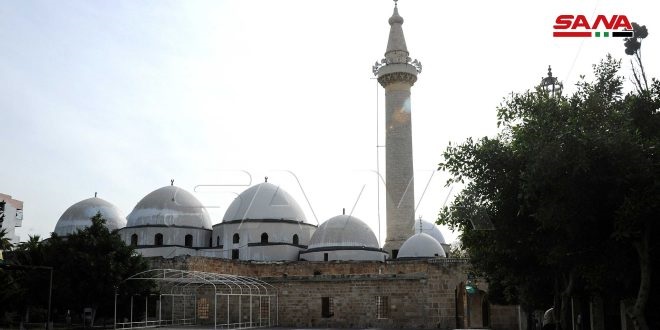“The Sultan Ibrahim” Mosque is one of the most famous religious and archeological monuments in the city of Jableh in Lattakia.
“ The mosque , which includes the tomb of the ascetic and mystic Sultan Ibrahim Ibn Adham, is located in the north-east of the old city in the middle of Jableh. It was built between 777- 785 AD, while some scholars mentioned that it was built in place of an old church at the beginning of the seventh century AD” according to Hamdi Dannoura, Director of Jableh Endowments.
Dannoura added that the mosque was built in 3 stages, the first, which is the Seljuk stage, started from the room in which the shrine is located. The second stage is called the Mamluk one during which the mosque, the pond, and the gate were built.

The Ottoman stage is the third one as the four main domes were built and some renovations and rehabilitation works were carried out.
The mosque is characterized by three perpendicular entrances, two northern and southern entrances that lead directly to the open courtyard .
According to Dannoura, the mosque consists of an open courtyard and the place for prayer “the shrine room.” It is in the form of a square castle with a side length of 8 meters, topped by a dome made of local sandstone and built on an octagonal base.
As for the place for prayer , which was completed in the Mamluk and Ottoman eras to take its current shape, Dannourah indicated that its main entrance from the western side leads to an open courtyard, and the thickness of its walls is 116,5 cm.
The director noted that the minbar( pulpit) was built of old white-gray marble and has 8 steps, indicating the hospitality hall in addition to “ Sultan Ibrahim” big bath which is decorated with marble.
It is mentioned that Sultan Ibrahim bin Adham was born in the city of Balkh in Afghanistan to an Afghan mother. As soon as he ascended the throne, he was urged to leave it and live a life of asceticism, mysticism and worship.He toured several countries, the last of which was Syria.
Rawaa Ghanam

